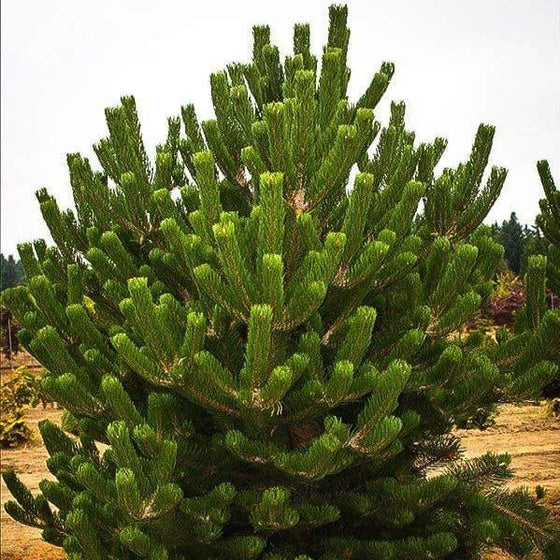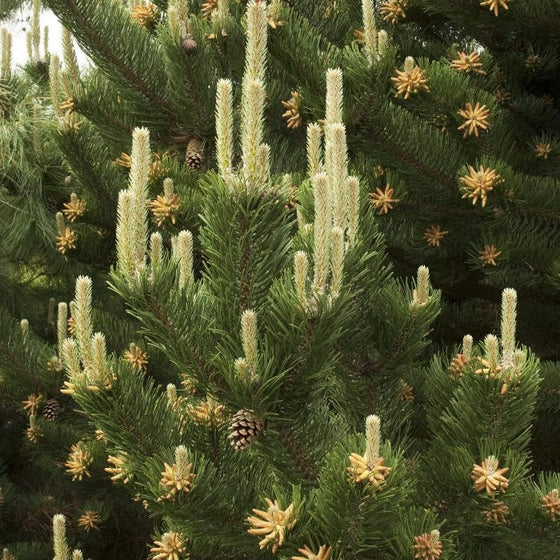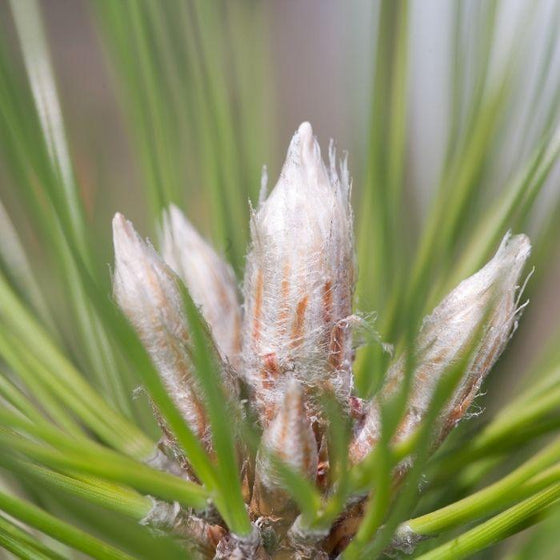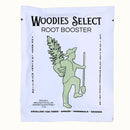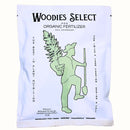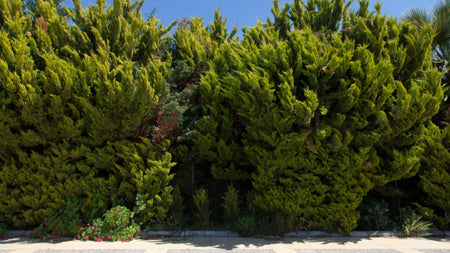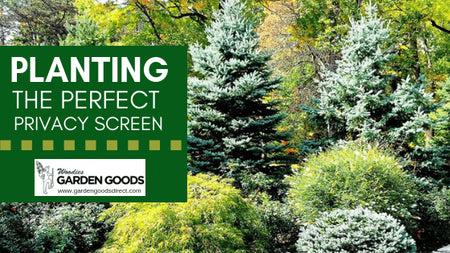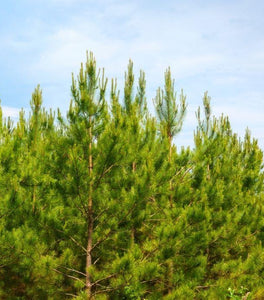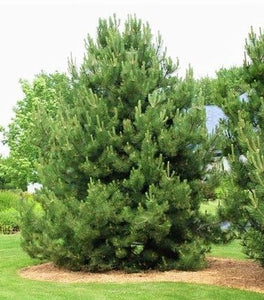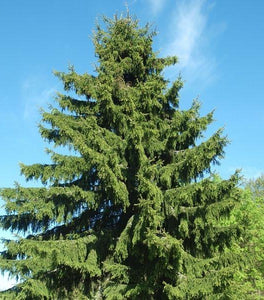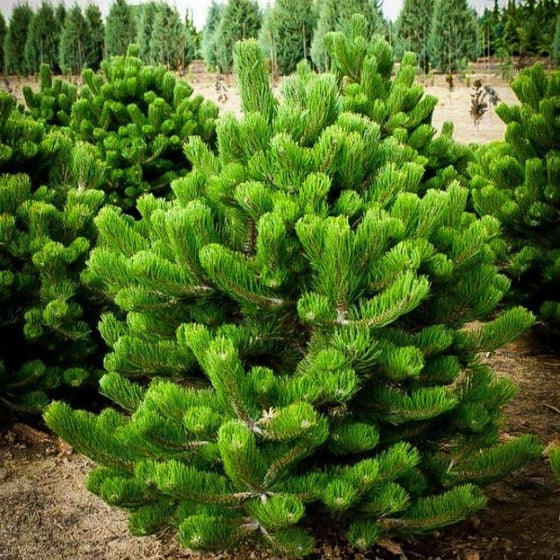
Images Depict Mature Plants
Austrian Pine Trees
The Austrian Pine (Pinus nigra), also known as European Black Pine, is a rugged and resilient evergreen tree prized for its bold, upright structure and dark green needles. This fast-growing conifer reaches heights of 40 to 60 feet at maturity, making it an exceptional choice for windbreaks, privacy screens, and large-scale landscapes. Its dense, symmetrical form and stiff, glossy needles provide rich year-round color and strong architectural presence, even in challenging growing conditions.
Ideal for poor, rocky, or sandy soils, Austrian Pines are drought tolerant once established and can withstand urban pollution, salt spray, and wind exposure. They perform well in USDA hardiness zones 4–7 and thrive in full sun locations, where they develop their fullest and most vigorous growth. Their adaptability to various soil types and climates makes them a go-to choice for both residential and commercial landscapes, especially where screening or erosion control is needed.
Low-maintenance and deer-resistant, Austrian Pines require little pruning and are relatively pest-resistant compared to other conifers. Their rapid growth rate and tough constitution make them an excellent long-term investment for property borders, rural windbreaks, or reforestation projects. Whether planted as a solitary specimen or in rows for dense coverage, Austrian Pine trees offer evergreen beauty and enduring strength in any large-scale planting design.
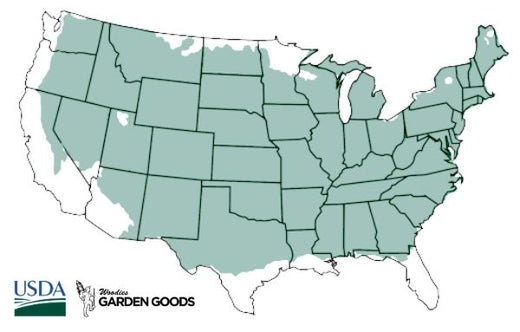
| Hardiness Zone: | 4-8 |
|---|---|
| Mature Height: | 40 to 60 Feet |
| Mature Width: | 15 to 25 Feet |
| Classification: | Evergreen Tree |
| Sunlight: | Full Sun |
| Habit: | Upright, Pyramidal |
| Foliage: | Dark Green |
| Soil Condition: | Any well drained soil |
| Water Requirements: | Water well until established |
How to Care for Austrian Pine
Before you buy a Austrian Pine Trees, make sure to read about the care instructions that are required and recommended to keep this plant healthy and thriving.
How do I Plant My Austrian Pine Trees?
Planting Austrian Pine trees begins with selecting a sunny location that offers well-drained soil and enough space for these robust evergreens to mature—typically 40 to 60 feet tall and 20 to 30 feet wide. Dig a hole that is two to three times wider than the root ball but no deeper than the root ball's height. Loosen the surrounding soil to promote root expansion, then gently place the tree in the hole, ensuring the root flare (where the trunk meets the roots) sits at or slightly above ground level. Backfill with the native soil, lightly tamping to remove air pockets, and water thoroughly to help settle the soil. After planting your Austrian Pine, apply a 2-3 inch layer of mulch around the base, keeping it a few inches away from the trunk to prevent rot and encourage healthy root development. Water regularly during the first growing season—especially during dry spells—to establish a deep and resilient root system. Avoid fertilizing at planting time, as this can stress young trees; wait until the second growing season to apply a slow-release, balanced fertilizer. Proper spacing, watering, and mulching are key to helping your Austrian Pine trees thrive as long-lived windbreaks, privacy screens, or ornamental focal points in your landscape.
How do I water My Austrian Pine Trees?
Watering Austrian Pine trees properly is essential for establishing healthy roots and supporting long-term growth. During the first year after planting, deep watering once or twice a week is ideal, depending on rainfall and soil conditions. Focus on soaking the root zone rather than frequent, shallow watering—this encourages roots to grow deeper into the soil, increasing the tree’s drought tolerance. Using a slow trickle from a hose or a soaker hose around the base of the tree ensures consistent moisture without overwatering. Avoid wetting the foliage, as excess moisture on the needles can lead to fungal issues. Once established, Austrian Pine trees are known for their excellent drought resistance and typically only require supplemental watering during extended dry periods. In hot, dry summers, provide a deep soak every 2–4 weeks to maintain tree health and needle color. Always check the soil moisture 4–6 inches below the surface; if it feels dry, it’s time to water. Mulching around the tree base with organic material like shredded bark helps conserve moisture, regulate soil temperature, and reduce weed competition. Consistent, deep watering supports the vigorous growth and rugged resilience Austrian Pines are known for in windbreaks, privacy screens, and large-scale landscape plantings.
How do I fertilize My Austrian Pine Trees?
Fertilizing Austrian Pine trees helps support strong growth, deep green foliage, and overall tree vigor, especially during the early years of establishment. In the second growing season after planting, apply a slow-release, balanced fertilizer—such as a 10-10-10 or 14-14-14 formula—in early spring before new growth begins. Spread the fertilizer evenly over the root zone, keeping it at least 6 inches away from the trunk to avoid burn. Water thoroughly after application to help nutrients soak into the soil and reach the tree’s roots effectively. For mature Austrian Pines, fertilization is typically only needed every 2–3 years unless the tree shows signs of stress like yellowing needles or reduced growth. If the soil is poor or compacted, consider a soil test to determine nutrient deficiencies and adjust your fertilization accordingly. Organic compost or well-aged manure can also be used to enrich the soil naturally. Avoid over-fertilizing, as excessive nitrogen can make the tree more susceptible to pests and diseases. Proper fertilization, combined with good watering and mulching practices, ensures that Austrian Pine trees remain healthy, lush, and well-suited for use in privacy screens, windbreaks, or large-scale landscape borders.

How and When should I prune my Austrian Pine Trees?
We highly recommend that you mulch your Austrian Pine Trees with either a ground hardwood mulch or a ground cypress mulch depending on your local availability. Any type of mulch will do but cypress or hardwood mulch will be of a higher quality and provide better nutrition overall as they breakdown. Mulching helps to keep weeds away which will compete with your new investment for water and nutrients. A 2 to 3 inch layer of mulch is sufficient but remember to take care not to cover any part of the stem of the plant with mulch. Its better to leave a one inch gap of space between the mulch and the stem or trunk of the plant. as the tree begins to mature you’ll find it will start to produce its own mulch in the form of fallen needles or “Pine Straw”. In September and October, this pine “sheds “all of its needles that grew out the previous year. This is normal and is actually a sign of healthy Austrian Pine Trees. These needles make excellent mulch and can be either left in place or raked up and used to mulch other acid loving plants.

